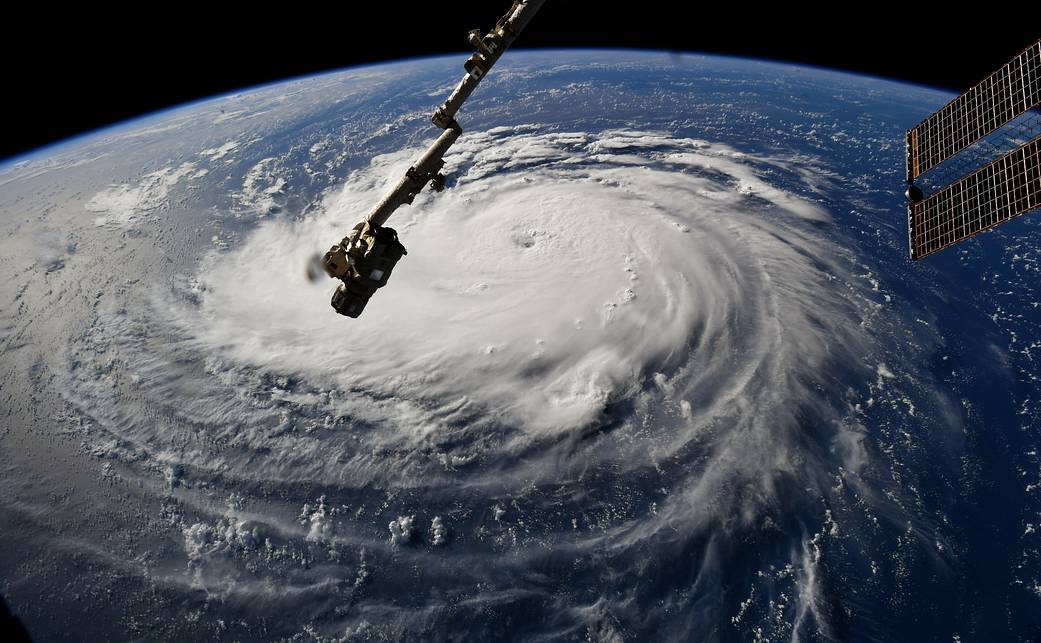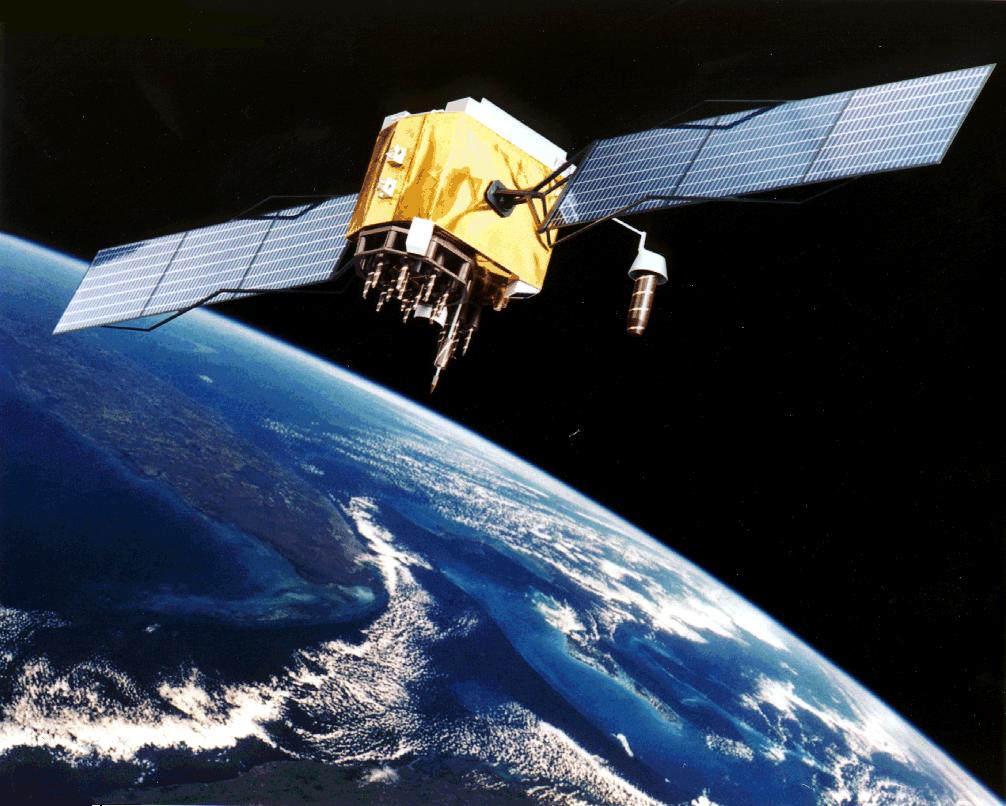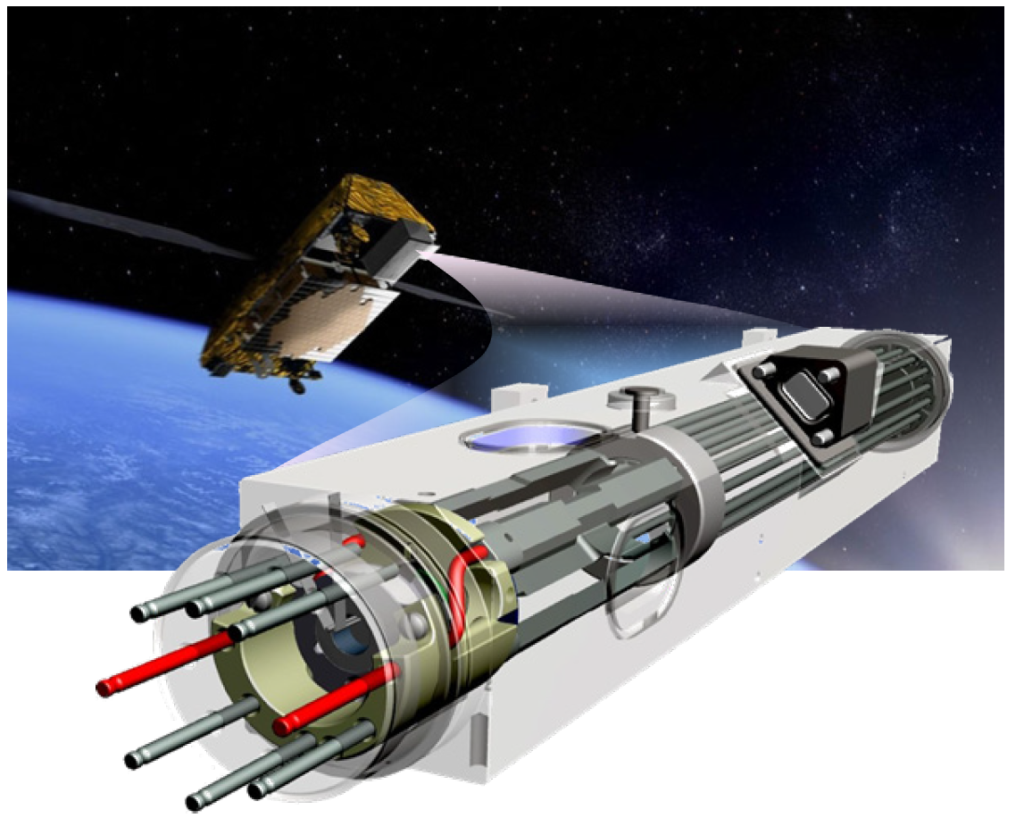
Hurricane Season: Geospatial technology’s role in disaster preparation, response, and recovery

Hurricane Florence, as seen from space. Courtesy: NASA
No matter what Hollywood thrillers like Geostorm suggest, we cannot use satellites to control natural disasters. What we can use satellites for, however, is to make informed decisions about disaster preparation, response, and recovery. And as the last few hurricane seasons have proven, geospatial technologies are an indispensable tool for both short-term response and long-term rebuilding efforts.
Escorted by high-velocity winds, heavy rainfall and storm surge, hurricanes are one of the most destructive geophysical events. And when such a disaster strikes, everybody needs to come together and act as one in response efforts. In such a scenario, spatial datasets and geographic information systems (GIS) which bring multiple layers of data under one roof become the ‘go-to technology’ for umpteen government agencies, nonprofit organizations, military, and even the average citizen.
Preparation to the Hurricane Season
Geospatial technologies kick into high gear right from the time a hurricane first begins its lifecycle. GIS and remotely-sensed data are an important part of the pre-disaster strategy which includes developing multi-hazard models to predict the landfall point, wind speeds, rainfall distribution, etc. Geospatial information is also essential to identify the precise locations of at-risk, critical infrastructure and transportation network, as well as the demographic profiles of vulnerable citizens.
For example, as the United States braced for Hurricane Florence earlier this month, GIS giant Esri released an interactive map to show the extent of probable storm-surge. This map was also packed with information like the median household income of those in the danger zone and the number of businesses, educational institutes, and health organizations that could be impacted. Further, the map shared how many people in the impact zone were above 65 years of age, giving federal agencies a clear indication of the level of preparation needed for the impending disaster.
Evacuation orders are also a product of GIS simulations, traffic and transportation data, flood mapping models, and the like, with exit routes being selected months in advance. In 2016, days before Hurricane Matthew was set to make landfall in North Carolina, officials urged more than 1.25 million citizens in the danger zone to evacuate their homes. And this mass exodus could be executed with an enviable level of efficiency only because it was a result of meticulous, information-driven planning.
Response
But, even with a high level of preparedness, determining the exact scale of devastation a natural disaster would wreak is never a certainty. Which is why post-disaster response models often start with a map, and depend heavily on accurate real-time data.
During Hurricane Katrina in 2005, GIS played a crucial role in the search and rescue operations undertaken by the US government. And when catastrophic Hurricane Harvey unleashed its fury on Texas in 2017, the Federal Emergency Management Agency (FEMA) shared up-to-date geospatial data with all state and local emergency response providers on a daily basis.
During Harvey, even social forums like Snapchat’s Snap Map proved indispensable in providing accurate locations of the victims, shelters, and relief supplies distribution centers. In fact, the identification of distribution centers is also dependent on spatially-aware data – where are the victims clustered, where is the nearest supply warehouse, how is the accessibility to the affected area, etc. GIS is also required for visualizing the most efficient pickup points and evacuation routes for survivors, supplemented by essential information like the capacity of a shelter or which shelters can accommodate the special needs of the elderly.
Recovery after the hurricane
When Hurricane Maria devastated Puerto Rico in 2017, response and recovery officials were faced by a surprising challenge: there were no street addresses available for any of the rural areas. Even the majority of the houses have been built without permits on government or private land. And yet, within weeks, volunteers were able to analyze 1.4 million homes for damage and digitize 24,000 miles of roads. This wouldn’t have been possible without the help of open-source, volunteer geo organizations like OpenStreetMaps and GISCorps, and What3words – a geospatial startup that has reinvented the global addressing system.
The US Virgin Islands were also hit by Hurricane Maria, and that too only a few days after Hurricane Irma tore roofs off houses and shut down communication and power grids. Here also aerial imagery and GIS played a central role in identifying and analyzing damaged roofs, allowing FEMA to accordingly prioritize its relief and recovery efforts.
Utility providers have been leveraging geospatial technologies as a powerful recovery tool for years now. After Hurricane Sandy ravaged through the Northeast US in 2012, as many as 18 power companies across the country were keeping their customers updated through real-time outage maps. Many utilities had predictive maps up and running even before Sandy hit.
Indeed, when countless lives and billions of dollars in infrastructure are at stake, having access to accurate spatial data and GIS models can give officials and volunteers the confidence they need to make informed decisions and get started with their work before things become worse.
If you enjoyed this article, read more and subscribe to our monthly newsletter!








